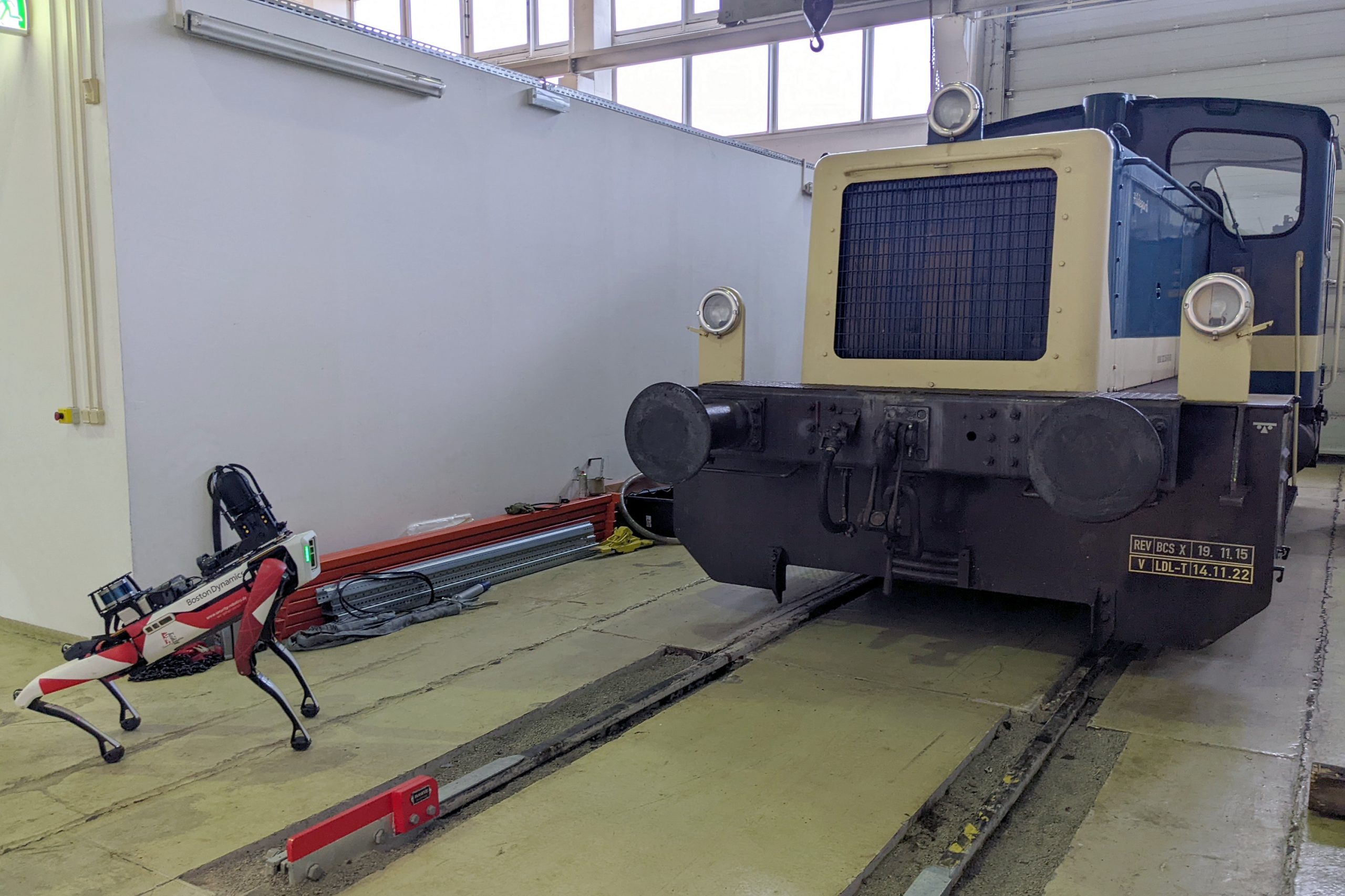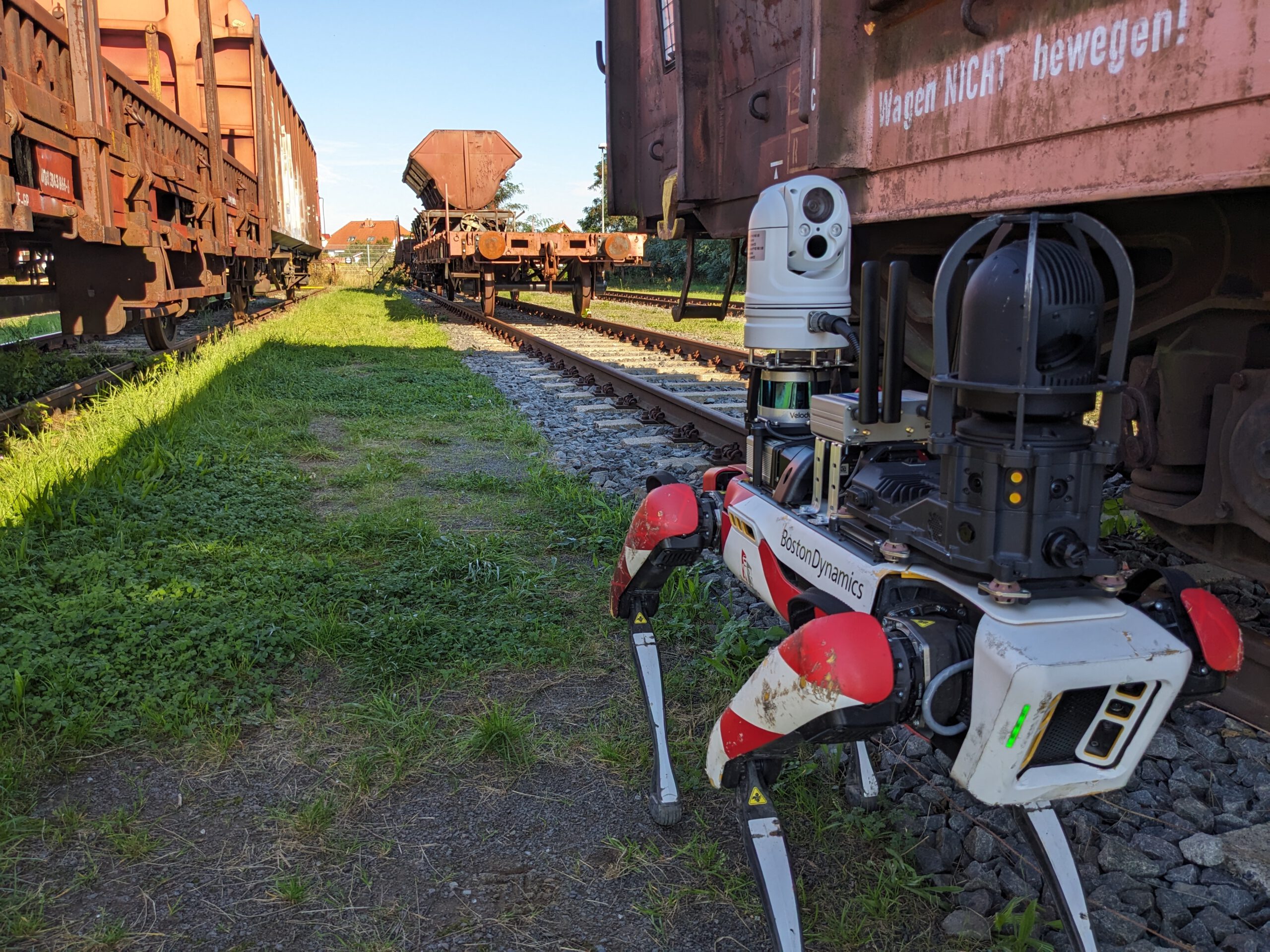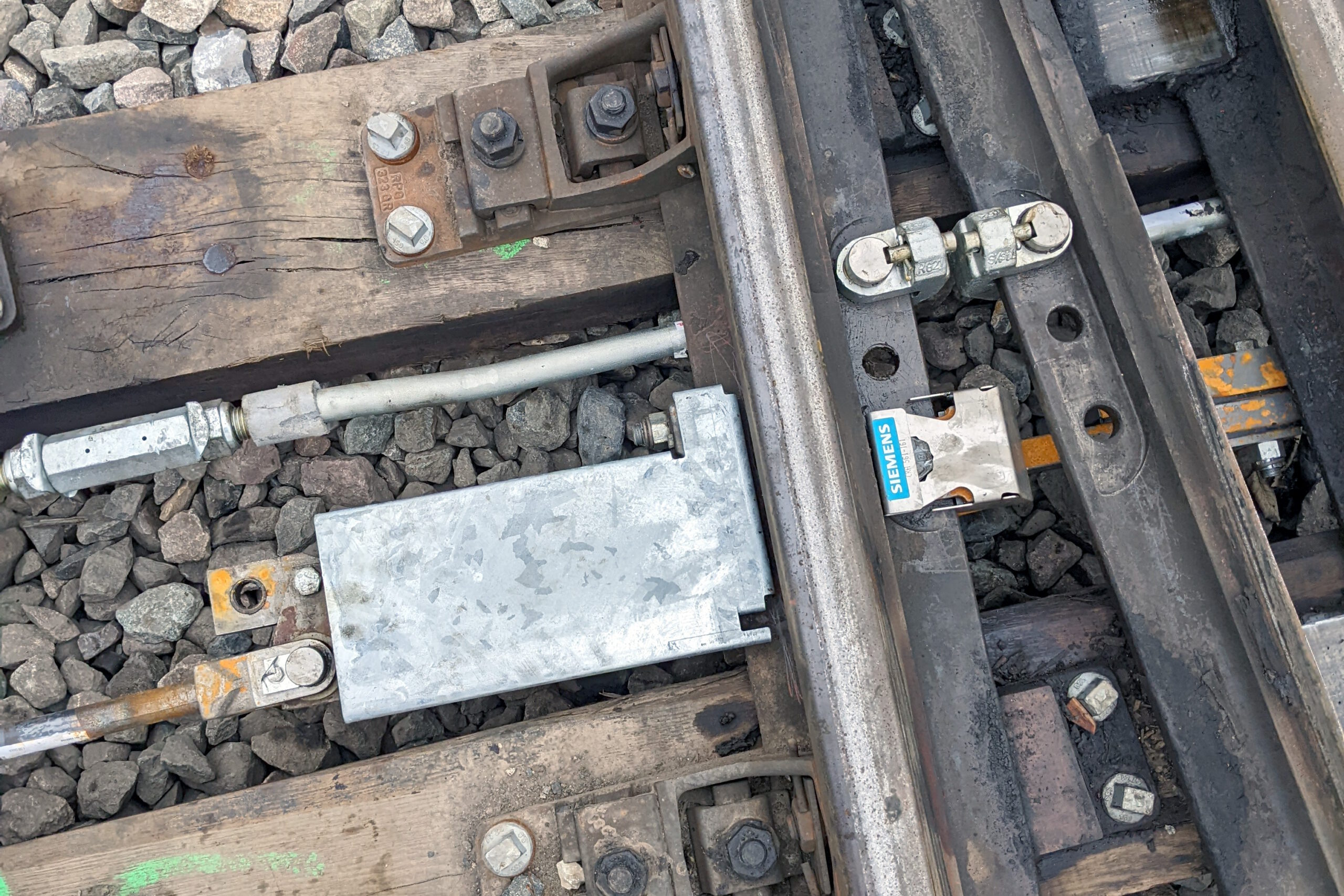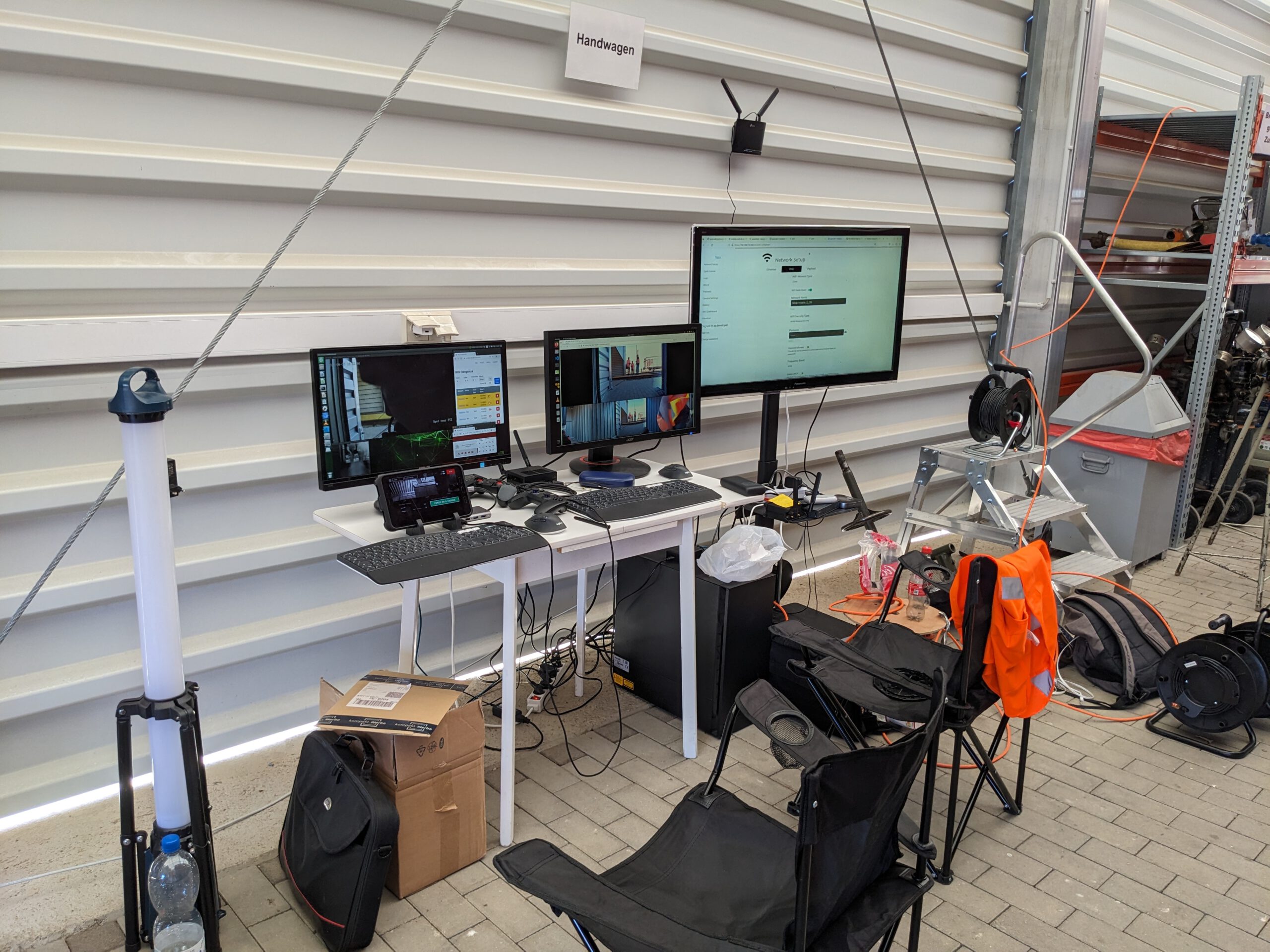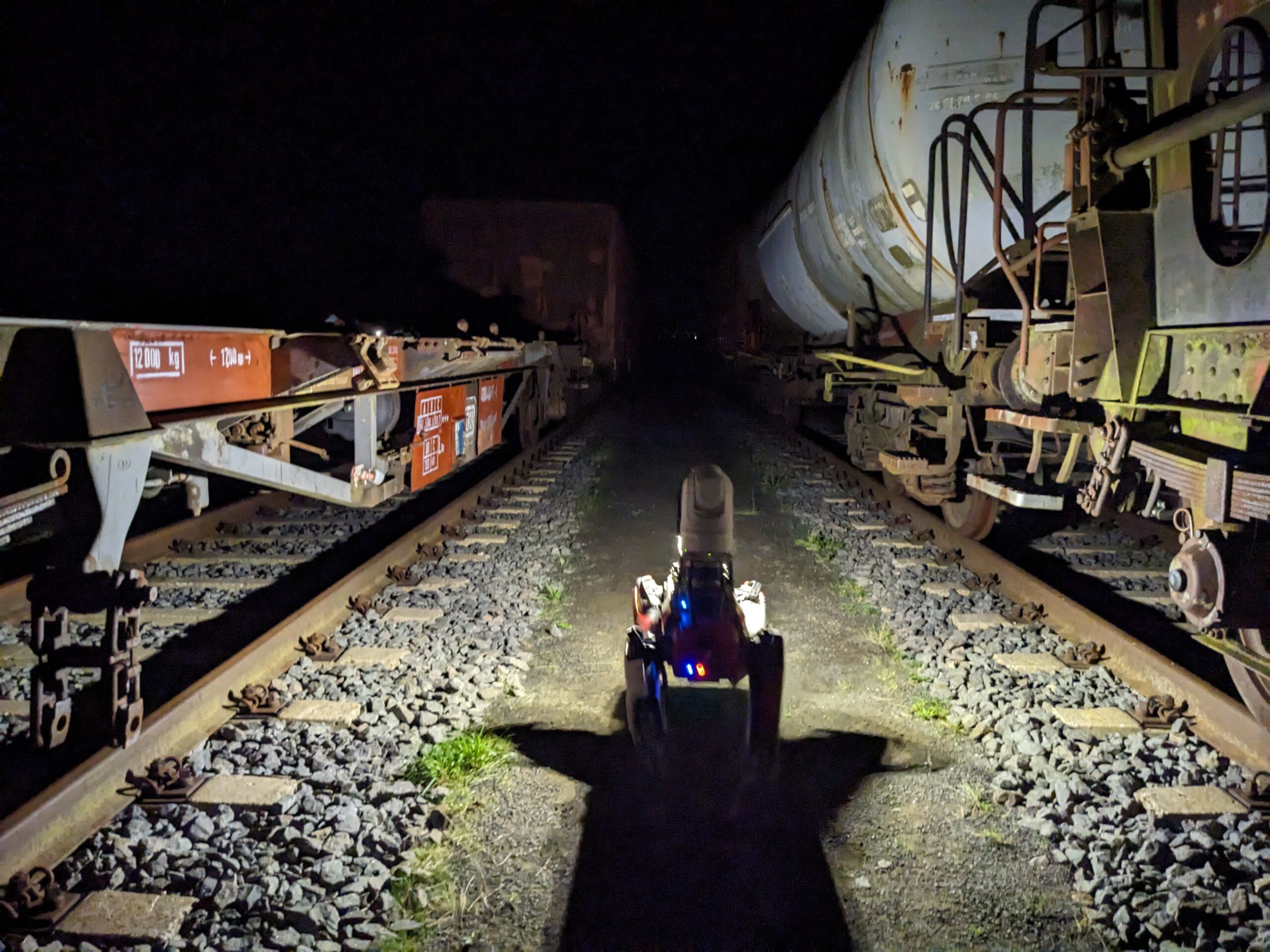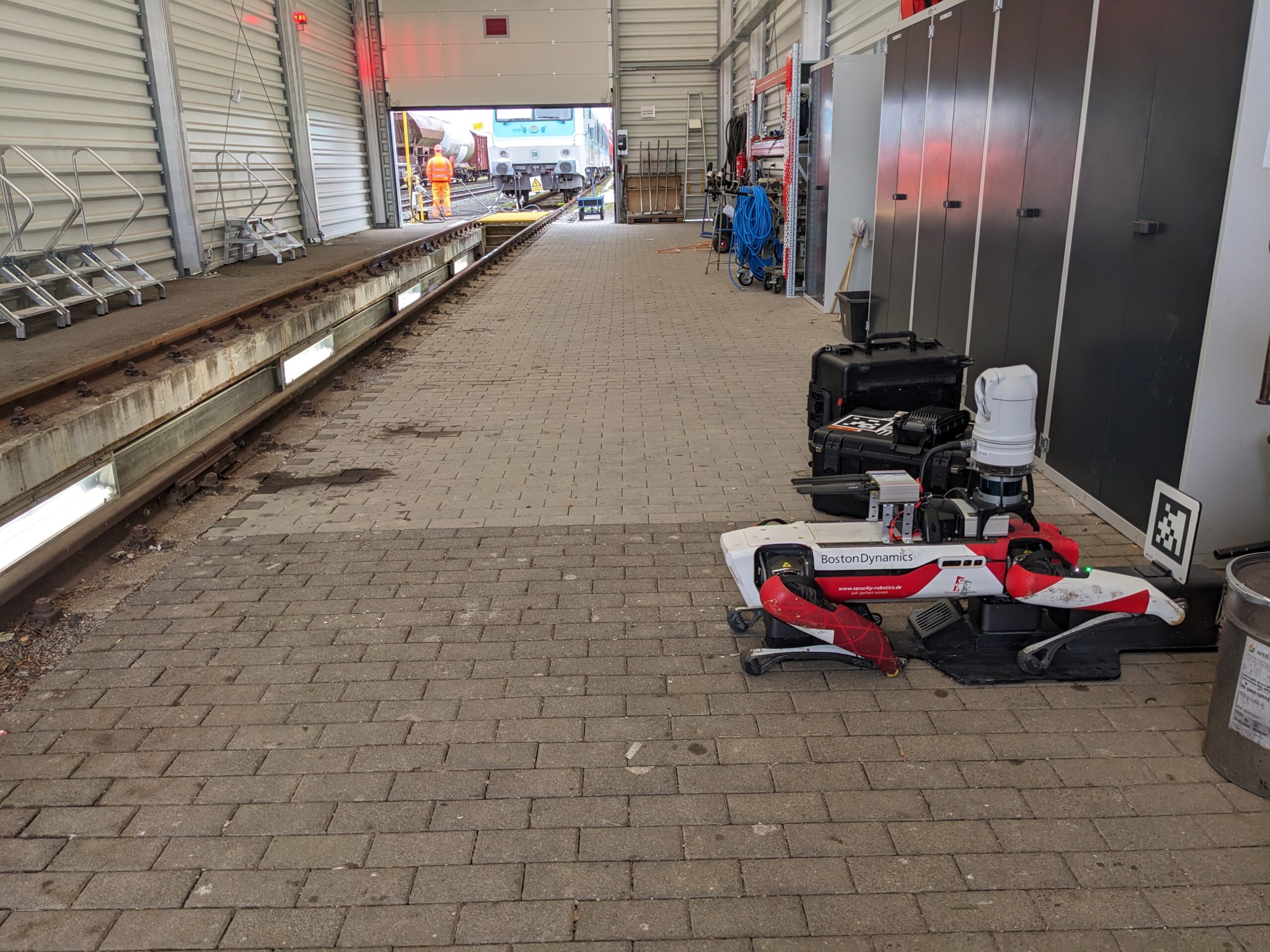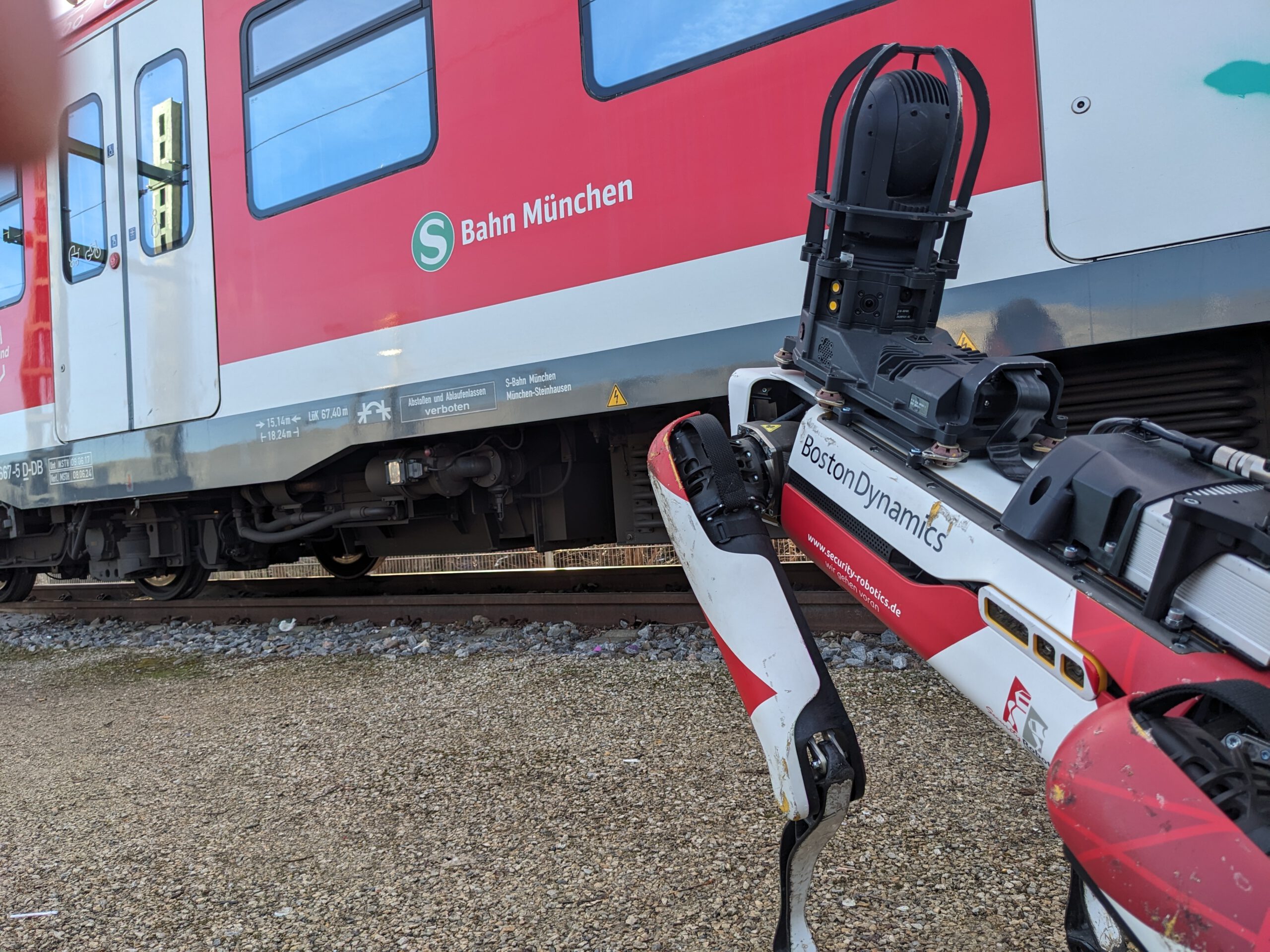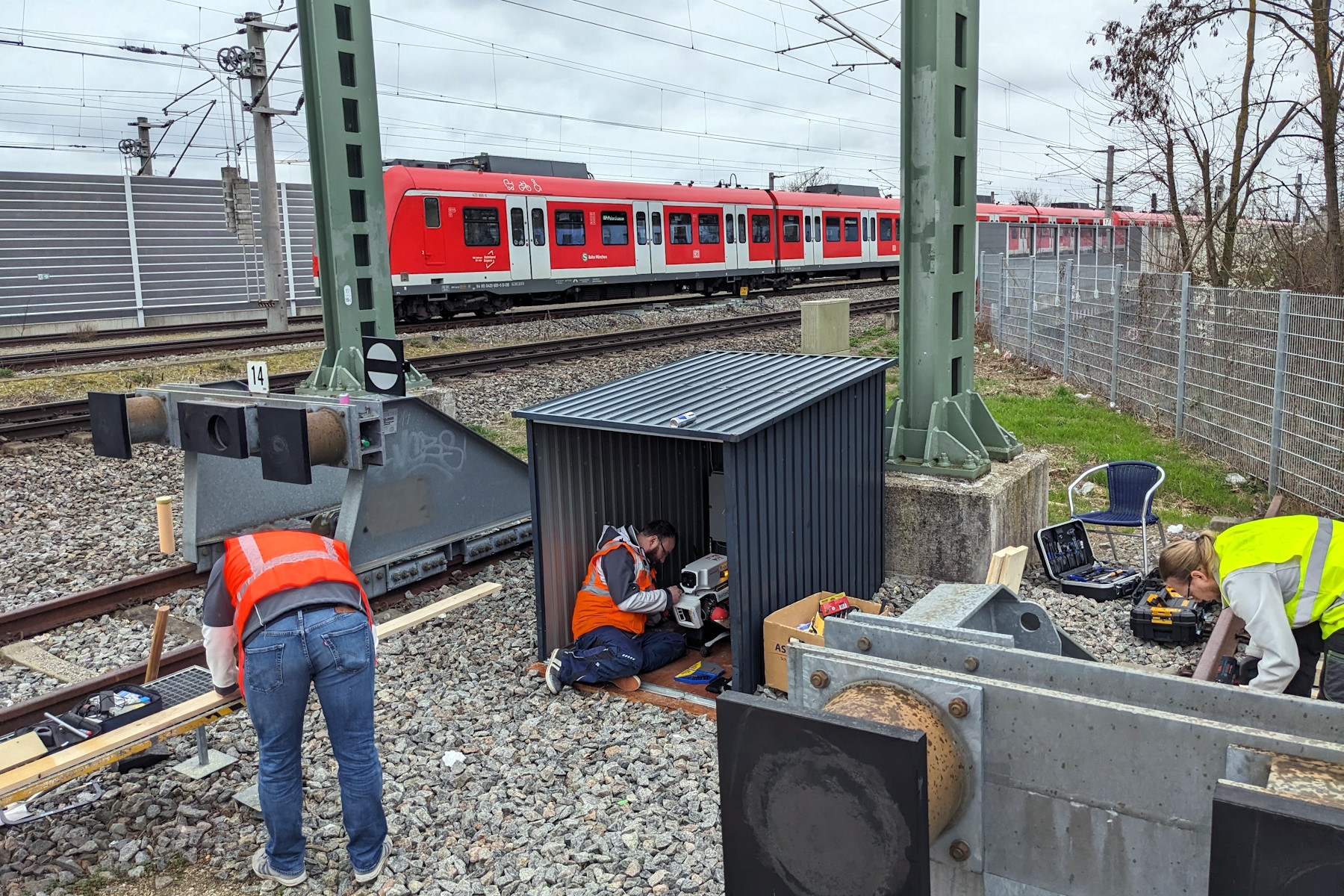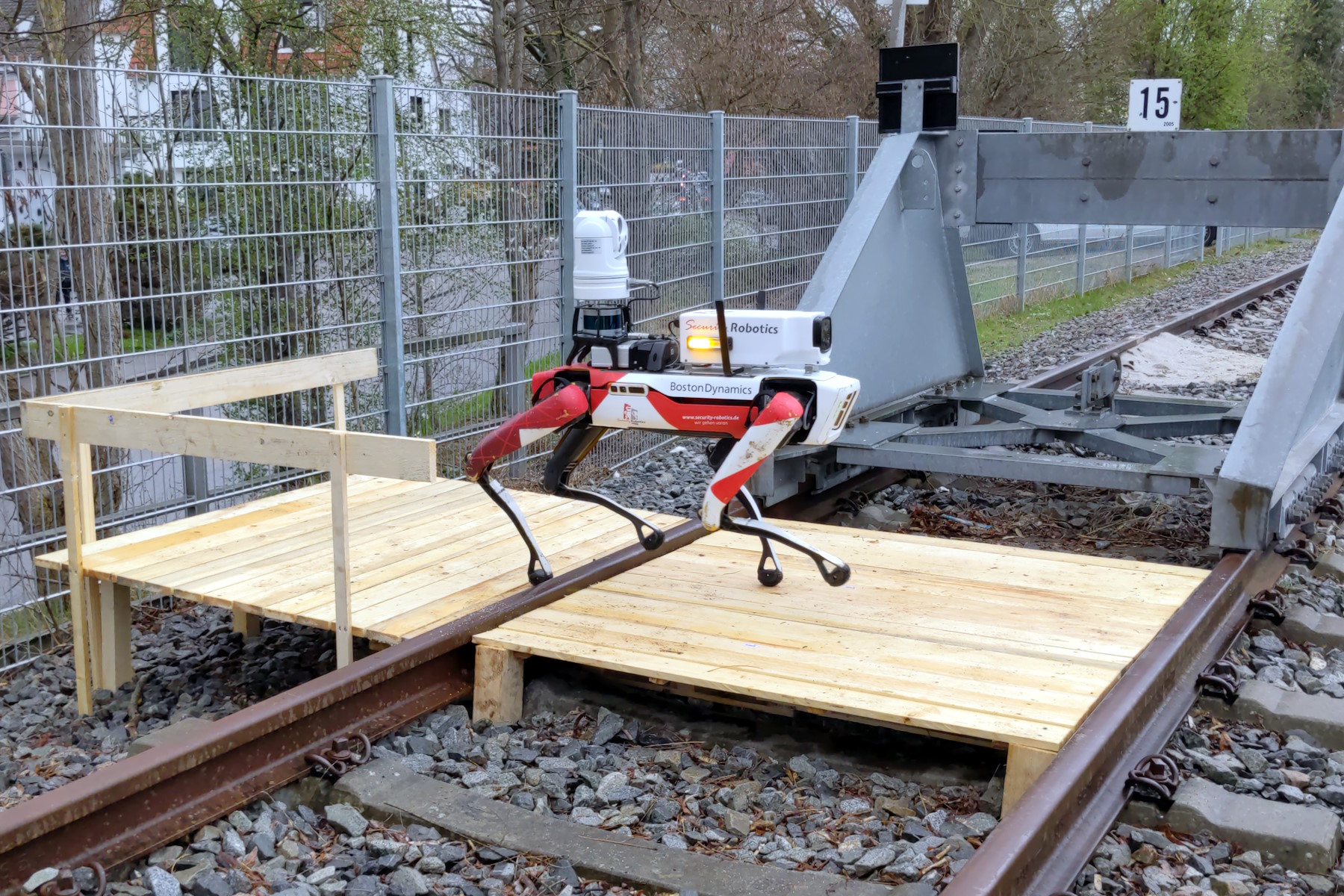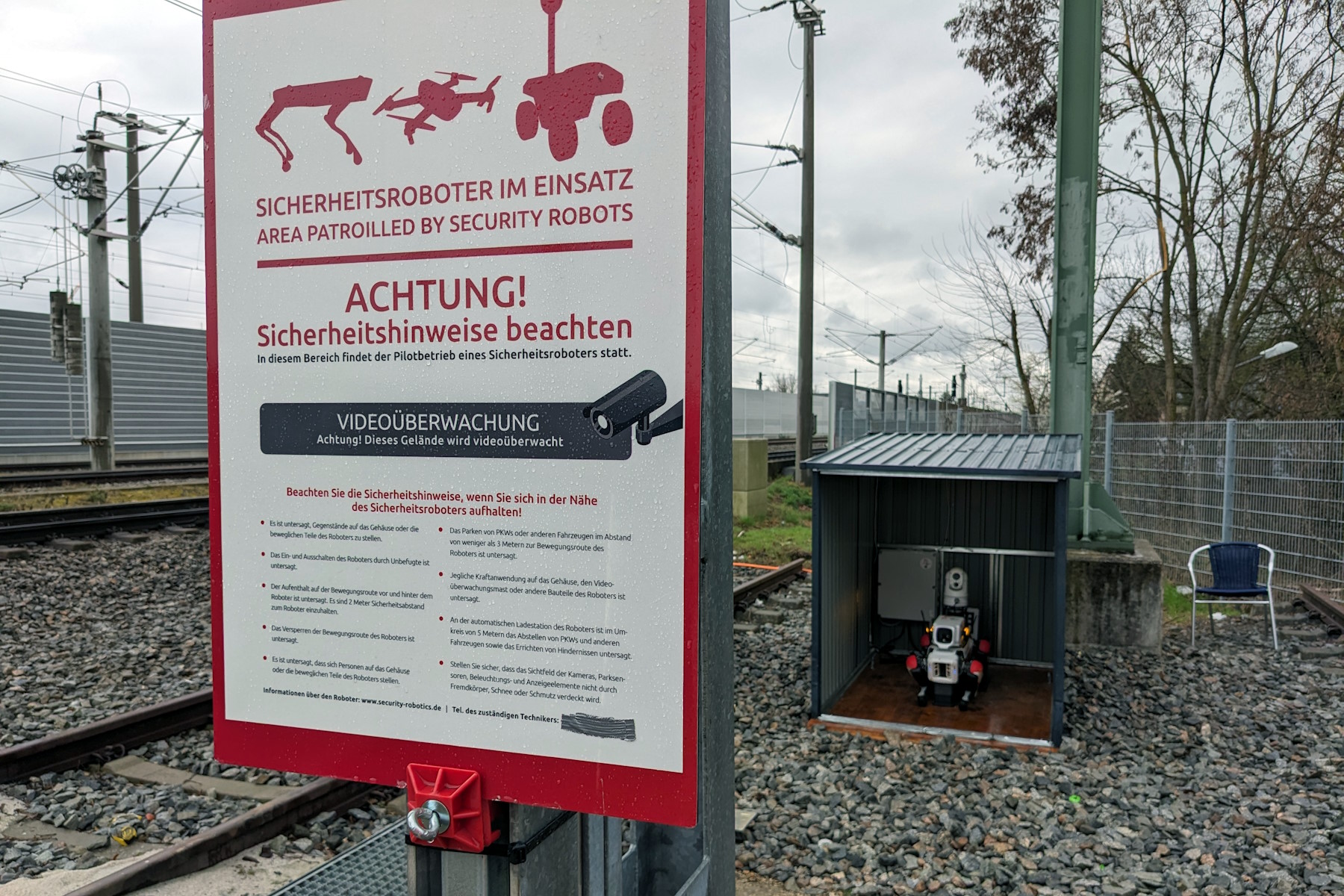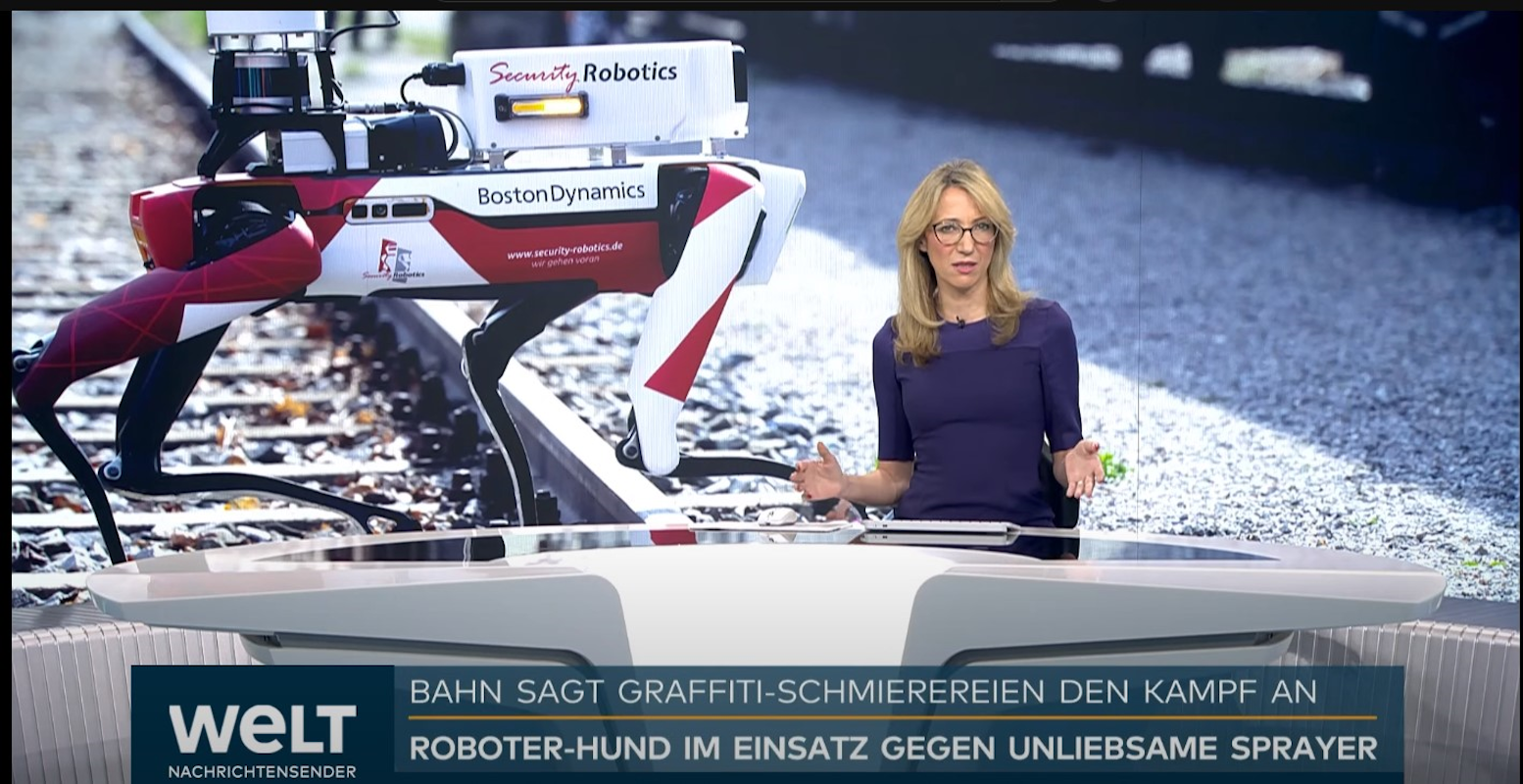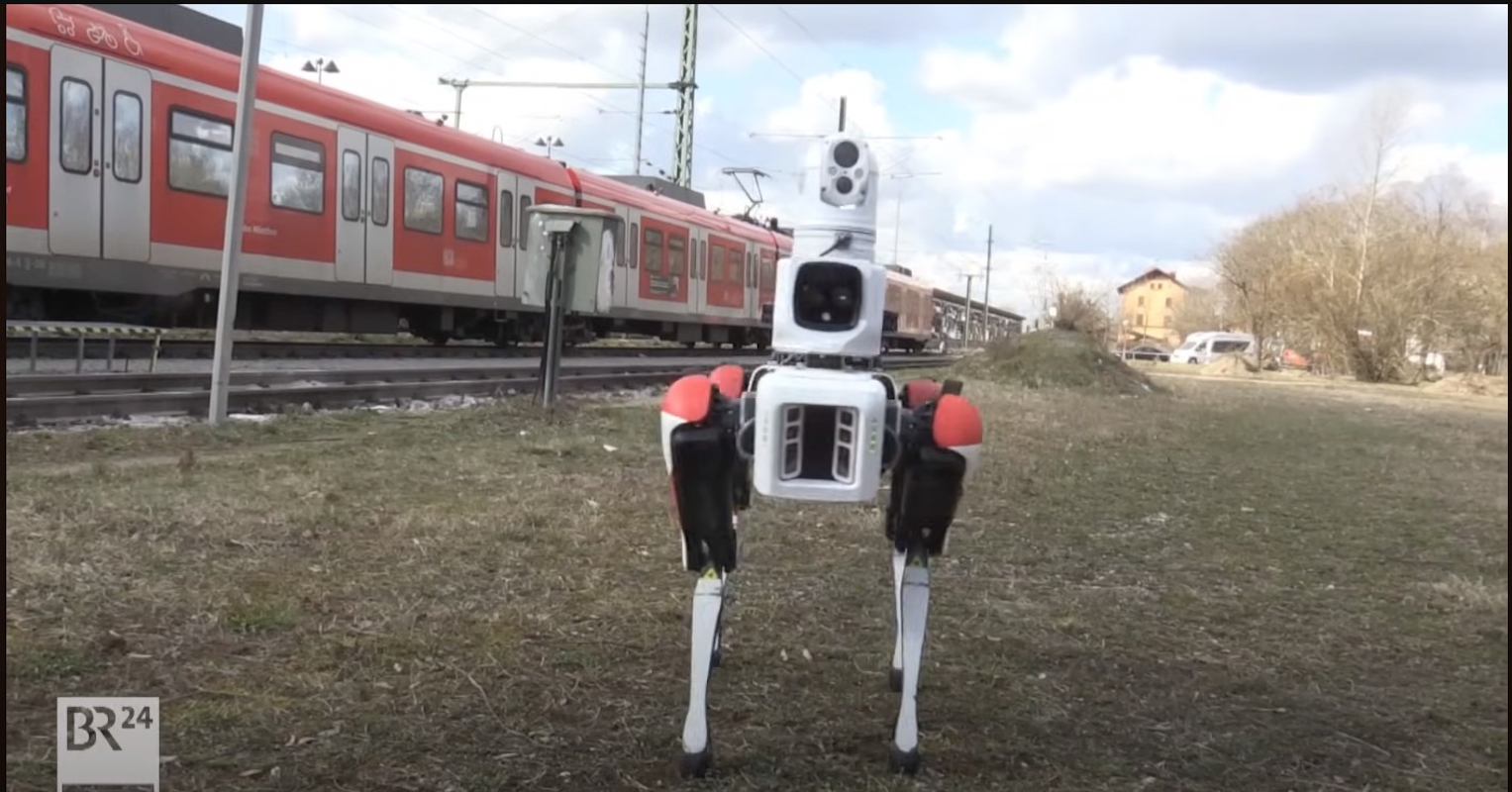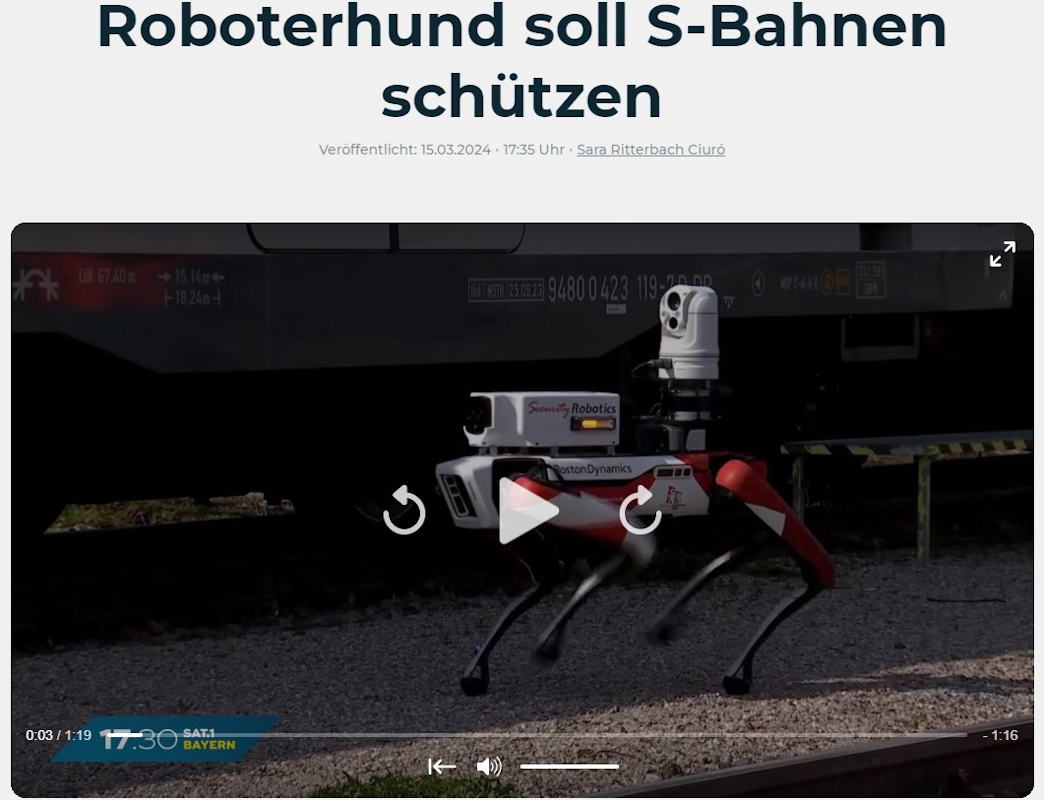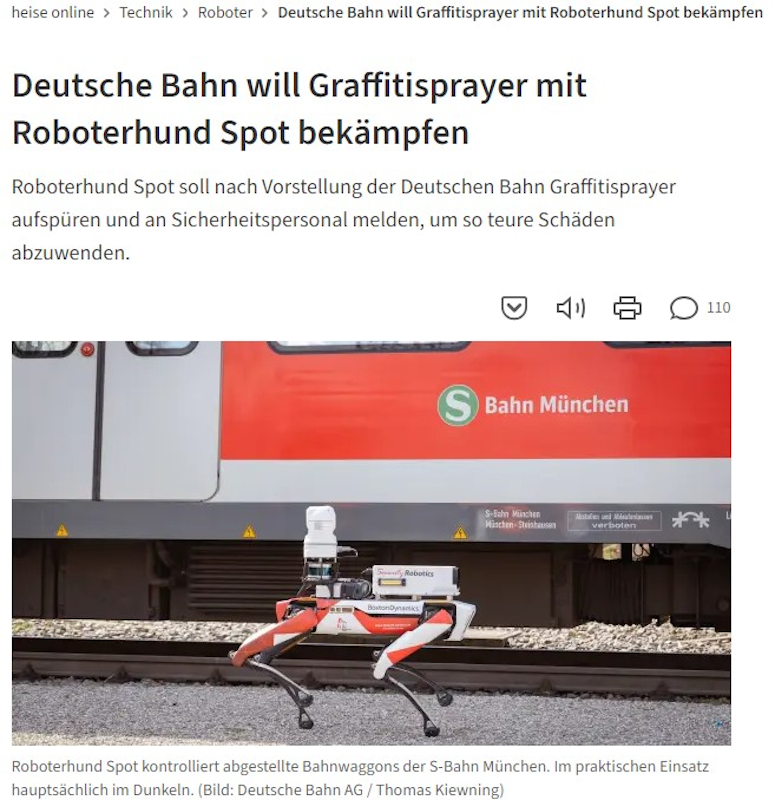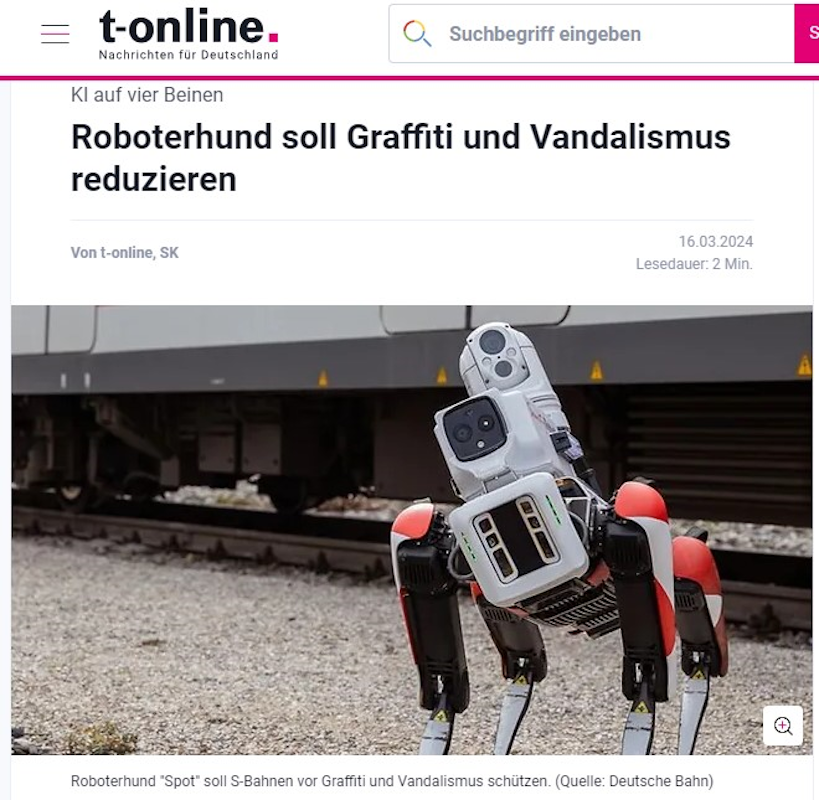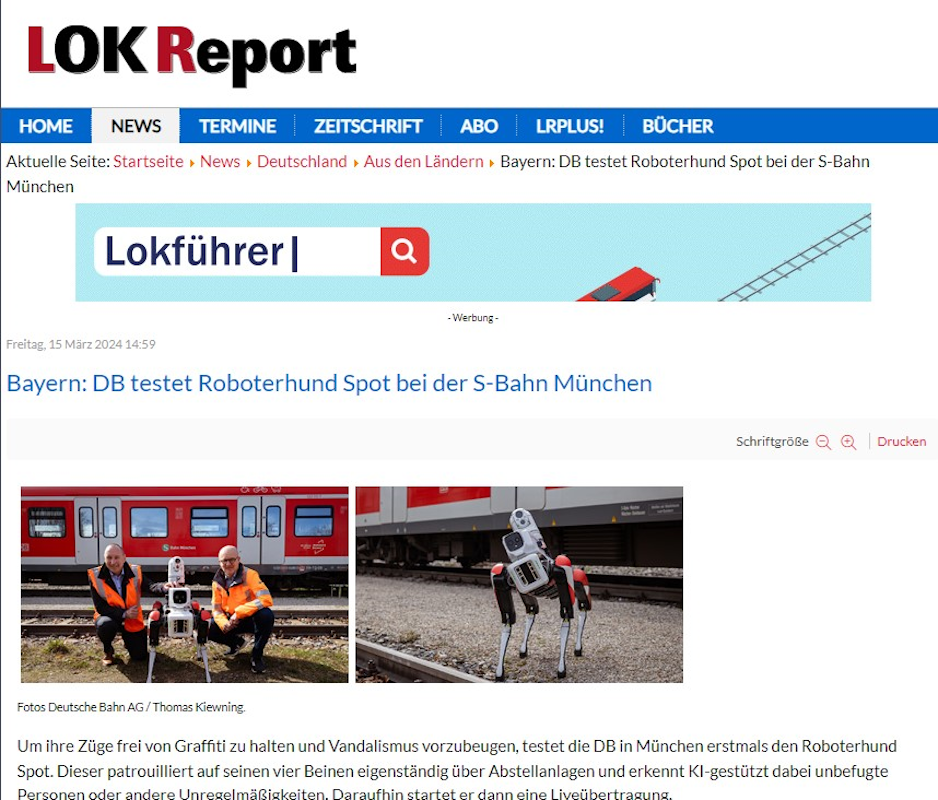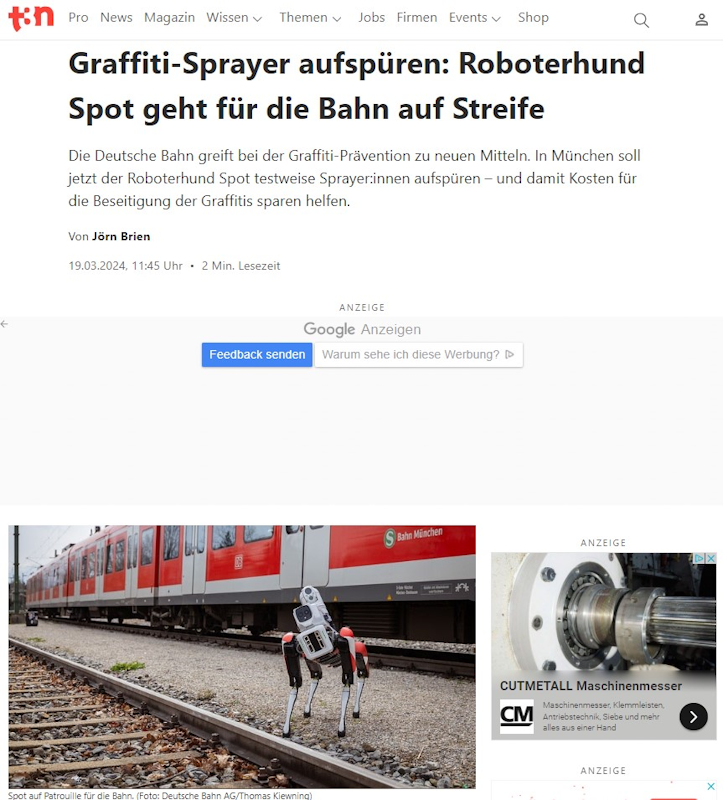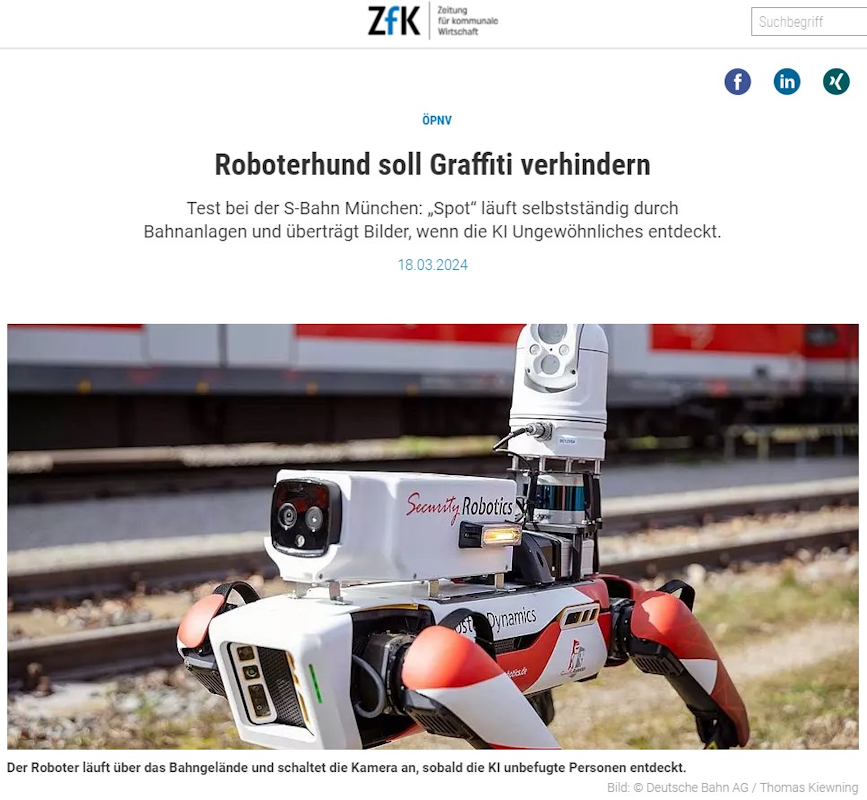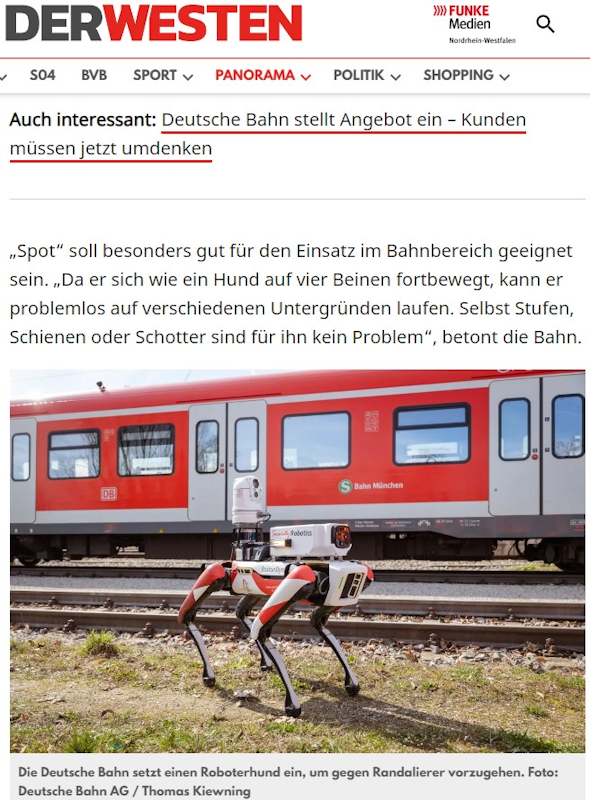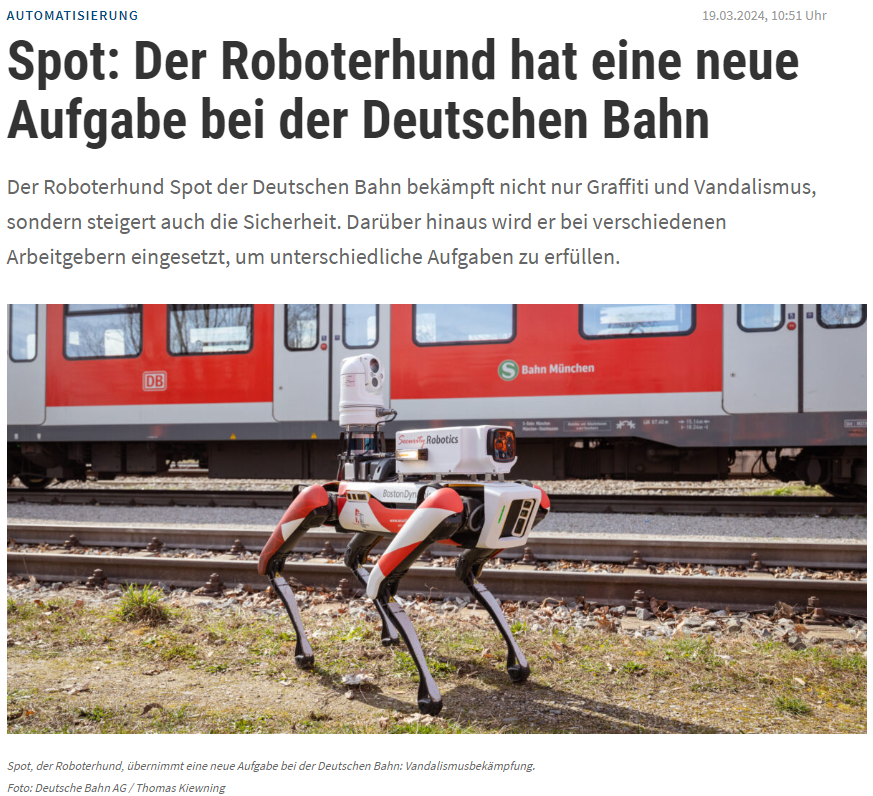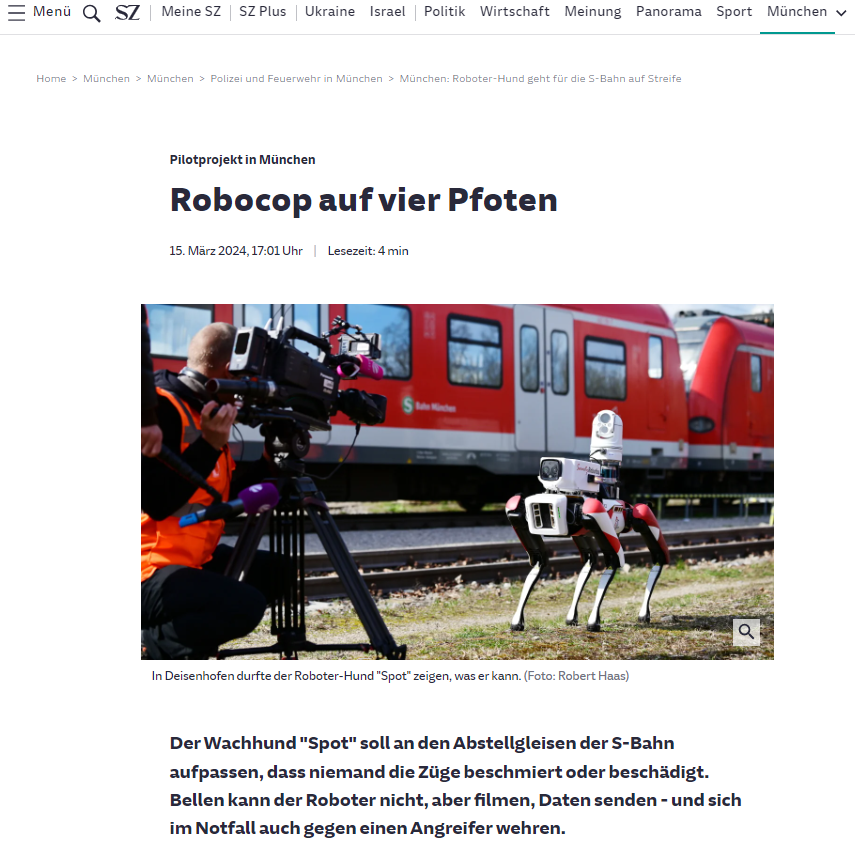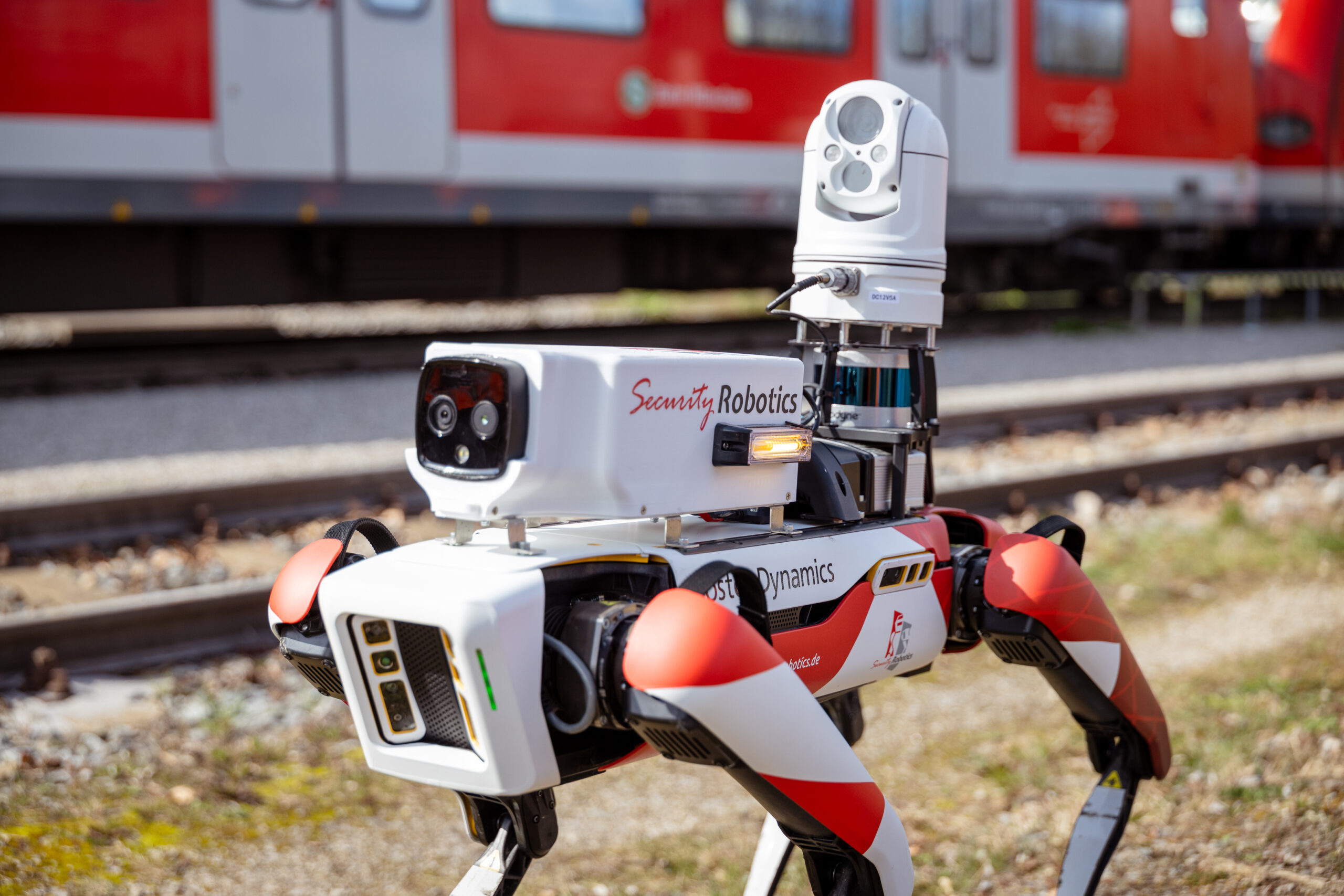
How robots can make rail (transport) safer. Deutsche Bahn and Security Robotics are working together to make progress and shift safety standards in the process.
As Germany’s largest logistics service provider, Deutsche Bahn AG (DB) is used to reacting dynamically and using cutting-edge technology to changes in the market and customer expectations, regardless of whether these relate to new products, services, experiences or simply safety. The challenge, especially when it comes to security, is not to remain stuck in familiar conservative thought patterns, but to focus on creative solutions and implement them sustainably.
Rising crime on the one hand and demographic personnel effects on the other have heightened DB Sicherheit GmbH’s awareness of the use of new technologies such as AI and robotics and have led to an intensive examination of the subject.
Innovative technology for challenging tasks
One starting point is dealing with graffiti. Whether sprayers take action to “express their opinion”, as a test of courage or out of pure vandalism, the effect is the same: sprayed trains have to be taken out of service and expensively cleaned/repaired, involving logistical, personnel and financial costs. It would therefore make a lot of sense to take action at an early stage and reduce the resulting damage, or even prevent it completely.
Our trains are our calling card and are crucial for the first impression we make on our passengers. That’s why S-Bahn trains with graffiti are sent to the depot for cleaning as quickly as possible and are therefore not available for use. The less graffiti, the better for our passengers. This is exactly where Spot the robot dog is supposed to support us with sensor technology and AI. In this way, we are driving forward the use of digital tools at S-Bahn, which we already use in the control centre and in maintenance.
As a new approach, the use of mobile and autonomous walking robots, specifically the Spot system, is now being tested for the first time. Patrolling independently and connected live with DB Security experts, the robot is designed to detect and report irregularities and unauthorised persons in order to enable a rapid response. This pilot project enables the system, software and all digital tools to be customised to make stabling facilities and other potential destinations more secure in the future.
Why AMR is an agile + sustainable solution
Autonomous Mobile Robots (AMR), equipped with artificial intelligence (AI), are able to identify pre-trained patterns in the video stream, analyse camera data and execute predefined routines. This includes, for example, triggering audible and visual alarms in the control centre to alert the security and management team to incidents.
Thanks to the AI’s high learning capacity and modular equipment with additional sensors, robots such as Spot can perform a number of parallel tasks simultaneously. These include inventory analyses, condition checks, early detection of fires, acoustic analyses of active machines, environmental checks, monitoring of the track infrastructure, detection of obstacles and unusual activities in the track area, checking lighting and signalling systems for improved safety or even carrying out maintenance and repair requirement analyses.
In stations, trains and defined areas, the flow of people can also be monitored and regulated on this basis in order to optimise the passenger experience and ensure smooth operations.
Spot put to the test
In a series of intensive proof of concepts (PoC), the robotic systems from Security Robotics, in particular the Spot walking robot, have been scrutinised by DB Sicherheit GmbH in recent months.
In graduated test scenarios at various locations, the basic suitability, movement, orientation and handling of the complex, changing conditions (rails, switches, inclines, different floors, moving elements such as carriages, etc.), routing, autonomy, day and night operations and, of course, all of the robot’s sensory capabilities were intensively tested and defined.
We are now taking the next logical step and putting the benefits of the robotic system and the cooperation between man and machine to the test in a four-week live deployment – under real conditions.
We are looking forward to the results of the live test in Munich and look forward to many more exciting projects with Deutsche Bahn and interesting tasks for our spot.
Pressecho
The announcement of the deployment of a safety robot on the Munich S-Bahn caused a great stir in the press, a cross-section of the reports can be found below:
- DEUTSCHLAND: S-Bahn in München setzt auf Roboter-Hund “Spot” im Kampf gegen Kriminelle und Sprayer!
- Deutsche Bahn: Roboterhund soll Sprayer aufspüren | Abendschau | BR24
- Gegen Sprayer in München: Roboterhund soll S-Bahnen schützen
- DB testet Roboterhund Spot bei der S-Bahn München
- Deutsche Bahn will Graffitisprayer mit Roboterhund Spot bekämpfen
- Roboterhund soll Graffiti und Vandalismus reduzieren
- Bayern: DB testet Roboterhund Spot bei der S-Bahn München
- Graffiti-Sprayer aufspüren: Roboterhund Spot geht für die Bahn auf Streife
- Roboterhund soll Graffiti verhindern
- Deutsche Bahn: Roboter gegen Graffiti
- Spot: Der Roboterhund hat eine neue Aufgabe bei der Deutschen Bahn
- Robocop auf vier Pfoten
CONTACT FOR PRESS & COMMUNICATION:
E-Mail: info@security-robotics.de
Phone: +49 341 2569 3369
